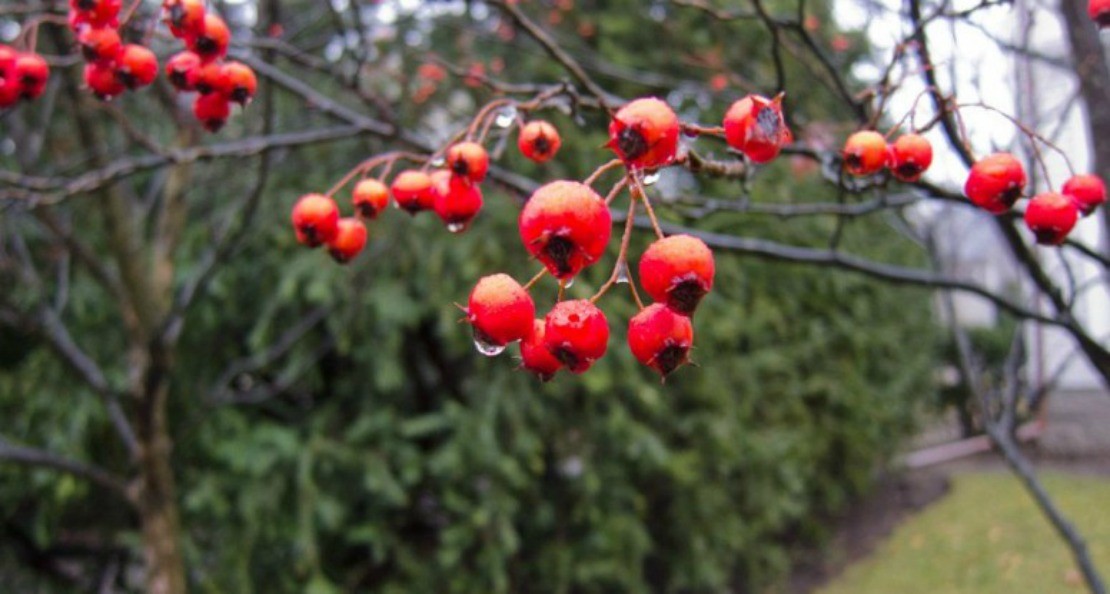
Hawthorn Tea for the Winter Heart
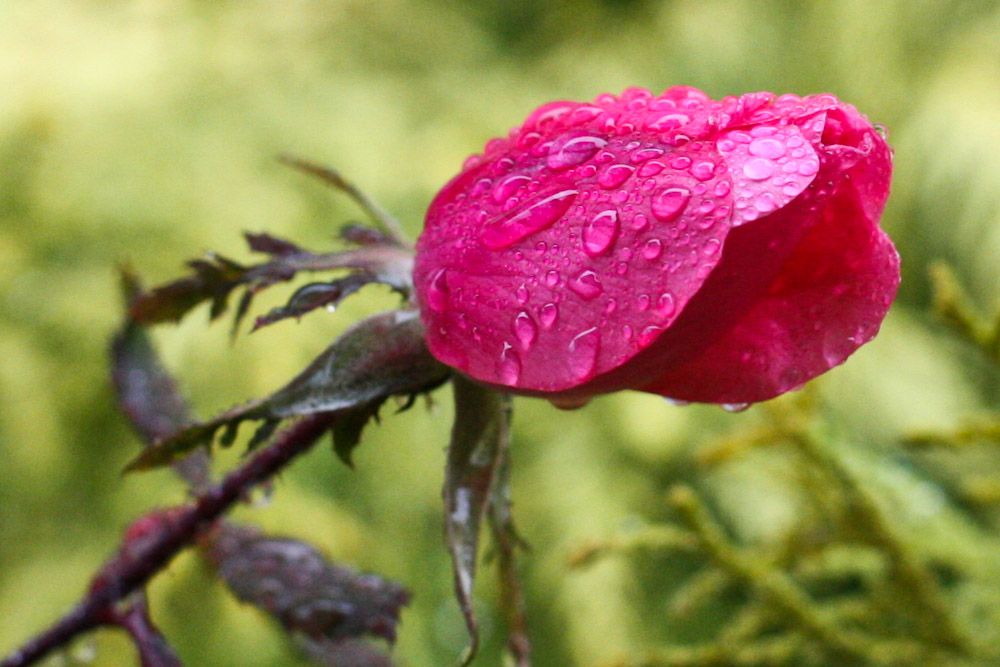
At the Solstice, from the Latin sol (sun) and sistere (to stand still), the sun appears to pause in its path before changing direction. But nature, as ever, is perfectly balanced: After the very darkest of days, the light begins its return. The victorious sun is the sacred promise of Solstice, celebrated the world over since ancient times. A few minutes of extra light, however, may bring small comfort to New Englanders, with our coldest days still ahead.
Cold weather and sunlight deprivation are associated with documented and widely acknowledged stressors. From Seasonal Affective Disorder and dry skin, to treacherous roads and high heating bills, to the stress of holiday travel – it all takes a toll on our body and mind. Low temperatures, for example, cause blood vessels around the outside of the body to constrict, which leads to dry skin and noses, which can cause more susceptibility to colds and other viruses.
Chilly winter is particularly hard on the heart. Blood pressure rises and clotting factors in blood increase. And then there is holiday season stress. While the natural world becomes still and turns inward, many of us do just the opposite: there are parties and feasts, gift-buying and dinner planning, rushing to and fro. Add the strain of travel, shoveling heavy snow, high fat foods, and skipping exercise, and it’s no wonder there is an increase in coronary artery disease deaths during the holidays. 1
Everyone knows by now that maintaining high fruit and veggie intake is critical for healthy hearts.2 A lesser known fact is that Mother Nature also provides heart-fortifying and nourishing herbs, like hawthorn and motherwort, and others such as garlic and cinnamon, that may support those with cholesterol imbalances. For the anxious and stressed, aromatic plants like rose, lemon balm, and linden are as delicious as they are soothing.
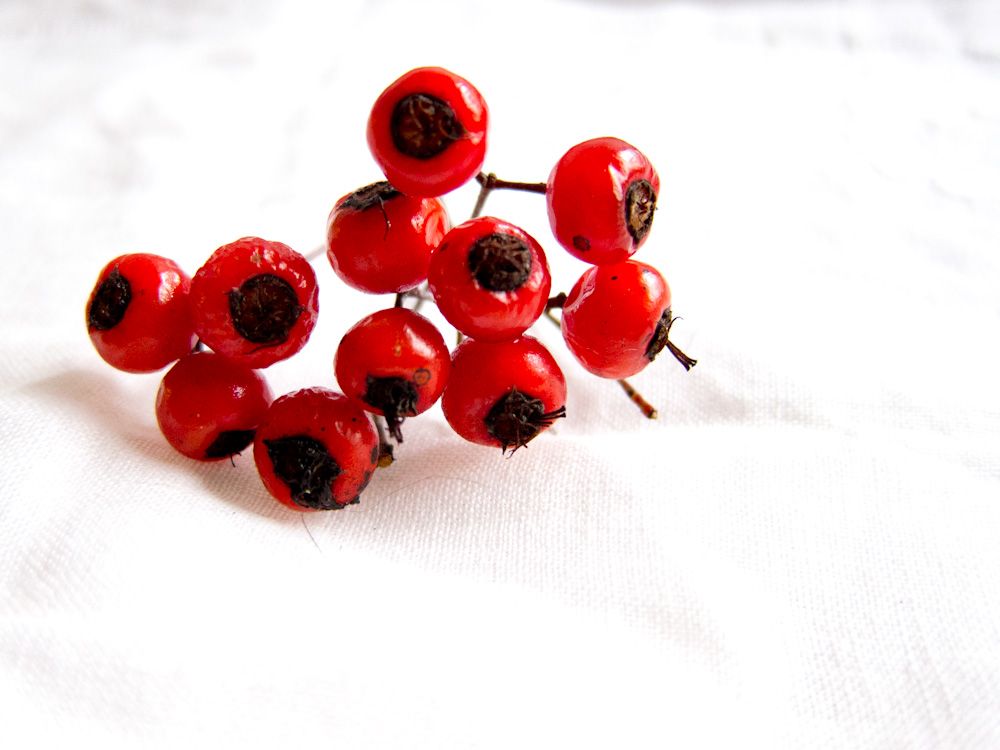
The hawthorn tea recipe below combines heart-opening rose with cinnamon, for a slightly fruity taste with warm cinnamon notes. (This recipe is provided for your information only and should not be construed as medical advice or instruction. Readers should consult appropriate health professionals. If you are pregnant or on heart medication, please consult your healthcare professional before using hawthorn or any other herbal product.)
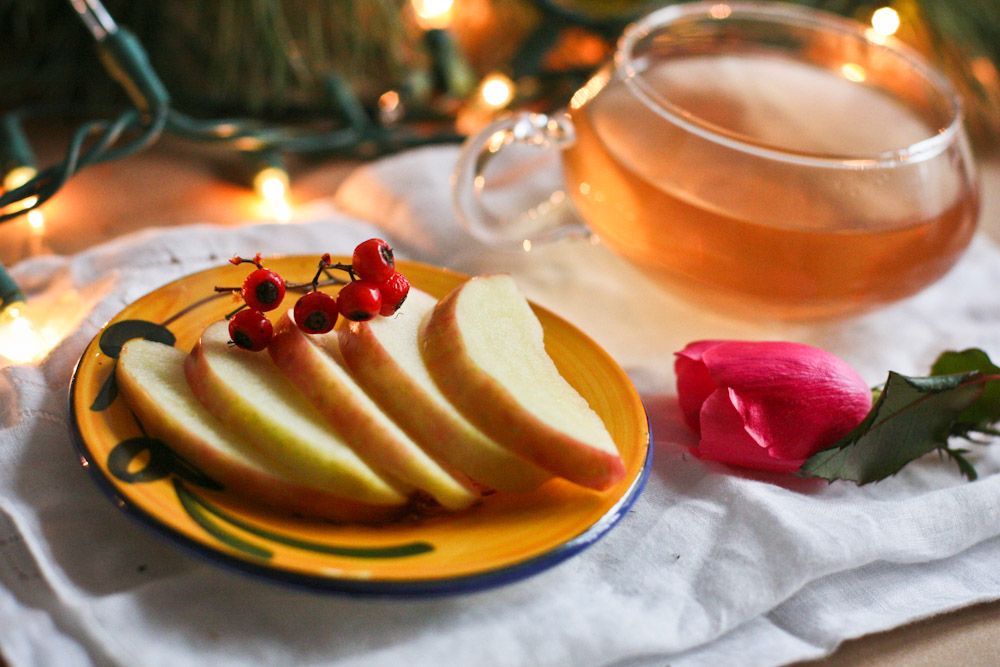
Winter Solstice Heart Tea
Hawthorn: The berry and leaf are used to increase blood flow to the heart, strengthen the heart muscles without increasing the beat or raising blood pressure, and support circulation. Other research indicates that hawthorn decreases low-density lipoprotein and triglycerides. In addition, hawthorn “seems to lower accumulation of fats in the liver and the aorta … Hawthorn fruit extract may lower cholesterol by increasing the excretion of bile, reducing the formation of cholesterol, and enhancing the receptors for LDLs. It also seems to have antioxidant activity.” 3
Rose: The beautiful and strong blossoms are mildly sedative and anti-inflammatory. Energetically, it is used to open and fortify the heart. Look for organic and fair-trade.
Cinnamon: Warming, carminative, flavorful, anti-inflammatory. May help lower LDL and triglyceride levels. 4
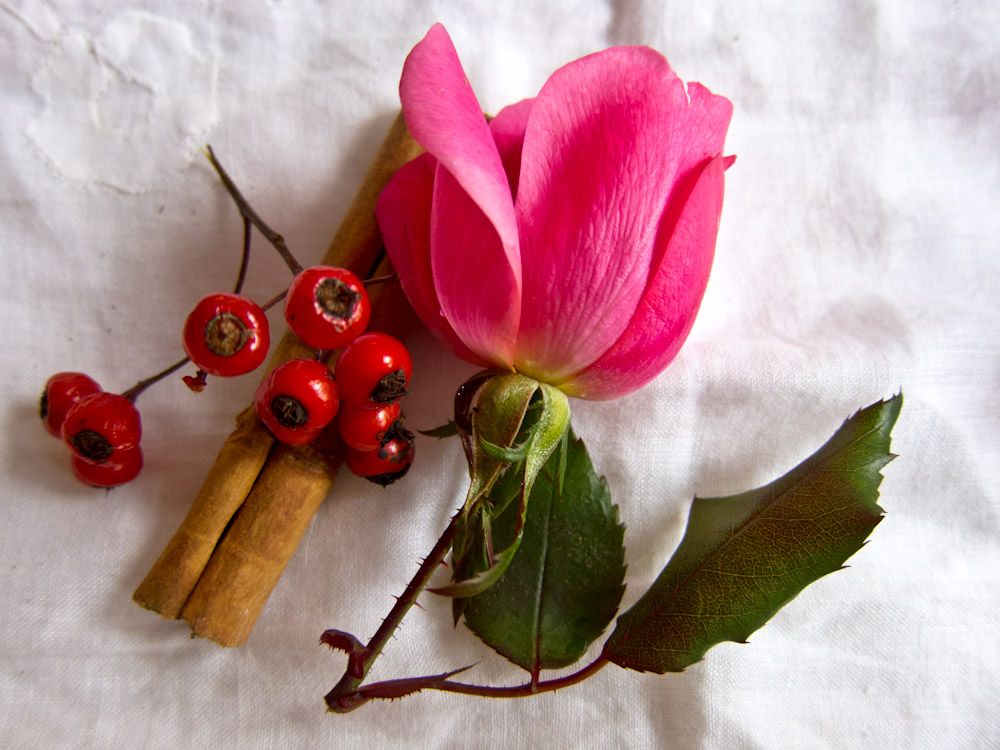
Ingredients
1 generous tablespoon dried hawthorn berries, soaked over night
1 – 2 generous teaspoons dried organic rose petals
1/4 cinnamon stick (or to taste), crushed
Directions
Measure 1.5 – 2 cups water into a pot
Place hawthorn berries into pot and cover
Bring water to a boil, then lower to a simmer
Simmer for 15 – 20 minutes, covered
Prepare roses and cinnamon and place into teapot, cup, or jar
Pour hot water and berries over roses and cinnamon, cover
Steep for 10 minutes, then strain
Stepping out of the mayhem with a cup of rose and hawthorn tea is a heart-healthy way to reconnect us to our inner stillness and keep us centered through the hectic holiday pace.
While we prepare and drink our tea, what if we take a few moments to pause like the sun at Solstice. To let go, like the bare trees and branches. Sink down to our roots, like the sap sinks in maples. As the seeds rest in the dark ground, we can savor the fertility of deep dark wintertime. And like the rose effortlessly giving its scent to the cold winter air, may we enter the New Year with open hearts, offering our own intangible gifts to others, gifts that make our world a little sweeter and brighter.
References:
1 http://www.webmd.com/heart/features/the-truth-behind-more-holiday-heart-attacks 2 http://www.who.int/dietphysicalactivity/fruit/en/index2.html3 http://www.webmd.com/vitamins-supplements/ingredientmono-527-hawthorn.aspx?activeIngredientId=527&activeIngredientName=hawthorn&source=1
4 Khan A et al. Cinnamon improves glucose and lipids in people with type 2 diabetes. Diabetes Care 26(2003): 3215-3218. Khan A et al. Cinnamon improves glucose and lipids in people with type 2 diabetes. Diabetes Care 26(2003): 3215-3218







